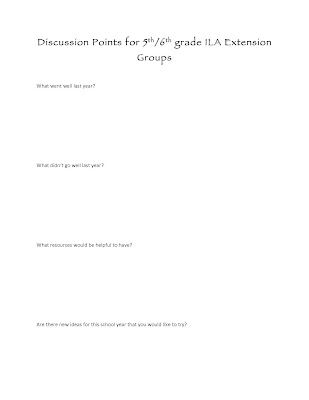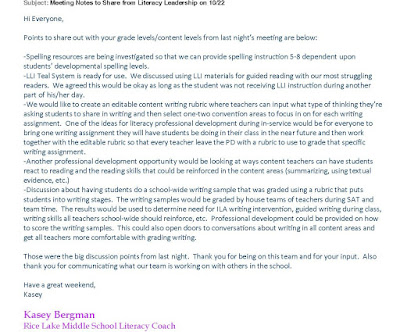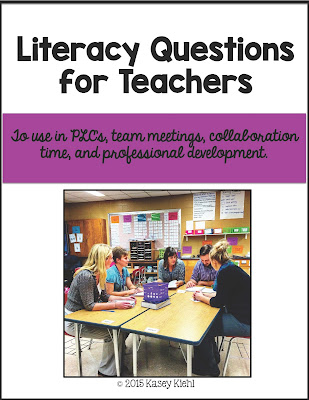We’ve all been there. That feeling when you look at the clock, realize an hour of your life that you’ll never get back has been WASTED. What was the meeting about? What was accomplished? The answers are unclear, but one thing is for certain: meetings without a point or meeting just because you’re supposed to meet are frustrating for teachers who have a million and one items on their to-do lists at any given time.
So if we’re sick of pointless meetings, how do we turn the tide and create an atmosphere where teacher collaboration time is invigorating and helpful? I’ve pinpointed five ways to rejuvenate teacher team time and make meetings the useful tool they should be for teachers.
1. Make or set an agenda every time
One of the ways I like to do agendas is by providing focus questions/talking points to make our way through to come to conclusions. Here is an example of an agenda with focus questions.
Another way that I like to form agendas is by going with larger topics and then breaking it down with what to focus on within that topic. Here is the agenda from our literacy leadership meeting this week.
Printing off agendas so that everyone can reference the agenda and actively take notes keeps engagement and productivity throughout the meeting high. Agendas should be specific and include action teachers can take. Agenda items should not be something that could be sent in an e-mail. They should be items that require conversation between human beings in order to reach a decision or create next steps of action.
2. Purpose, Mission, Vision
Why is the group you’re meeting with meeting? What is the mission the group wants to accomplish? Knowing the answers to these questions will drive purposeful conversations. At the top of each middle school literacy leadership team agenda, I always have our purpose and mission as a team. Above all, the vision for what the team is meeting for and what outcomes the team wishes to achieve should be clear.
3. Share Meeting Minutes
At the end of each meeting, summarize what decisions were made and what the action steps moving forward are. If everyone in the meeting is under agreement, have on person send out a summary of the major items decided to the whole group. Often times, we meet and walk away, and there is little follow-through even if something great was decided during the meeting. Taking the step to send out a summary of the meeting minutes keeps the decisions that were made alive and reminds everyone in the meeting of what action to take moving forward.
4. Make Students #1
The ultimate goal of any meeting in a school should in some way lead back to improving student learning. If finding the language of how to keep students at the forefront can be challenging, I’ve created a collaboration guide for literacy teachers to give focus questions necessary to get the results you want in meetings.
Literacy Questions for Teachers
5. Come Prepared/Bring a Smile
Collaboration time with teachers can be the best form of professional development to a complain about the world session and everything in between. The choice is always yours of which one it will be. Doing your part and walking in with a positive attitude does wonders. Bringing treats every now and again never hurts either. Positive energy is contagious, as is negative energy. Lift up team meetings, focus on the things you have the power to impact, and do something great TOGETHER.











